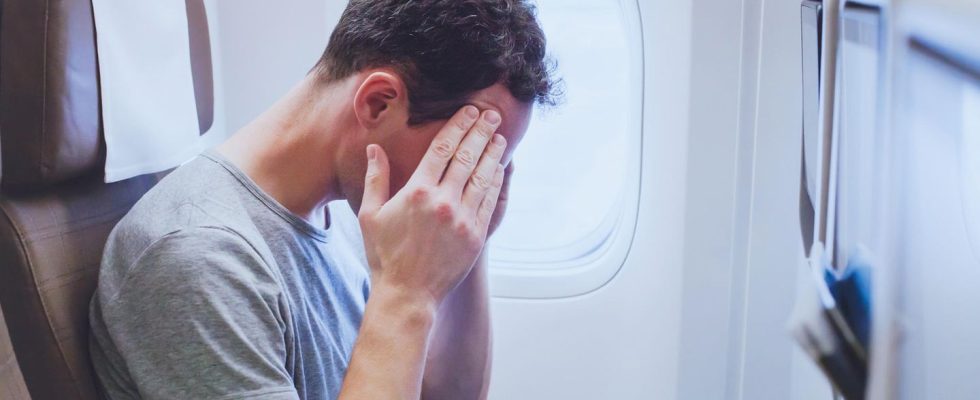“Calculated misery”
How airlines make us suffer to make more money
Your knees are already hitting the seat in front – the days of comfortable travel are over for most airlines
© anyaberkut / Getty Images
During the autumn holidays, some families head out into the sun again, often by plane. But traveling by plane is no longer as relaxing as it once was. This is what most airlines calculate with, says a researcher.
Holiday time is travel time! In some federal states the autumn holidays are almost over, in other federal states they are just beginning. This year’s ADAC tourism study found that one in four travelers uses planes for this purpose. Everyone is working Airlines remember that the time on the plane is becoming increasingly uncomfortable. At least that’s what Tim Wu, journalist and US legal scholar, believes. And he sees a calculation behind it.
Traveling is becoming more expensive – and more inconvenient
“Calculated misery” is what Wu calls this attitude of the airlines. The aim is to make the flight time as uncomfortable as possible for travelers so that they are willing to pay more money for a less miserable experience. “No-fee basic services need to be degraded to the point where people are willing to pay to avoid it,” Wu writes in an article for the New Yorker. “And that’s where the suffering begins.”
In practical terms, this means for passengers: the more comfortable (or easier on the joints) you want to travel, the more money you should leave with the airlines. This is noticeable in every nook and cranny, but especially when it comes to comfort, luggage and additional services.
Particularly tall people or people who are afraid of confined spaces are at a loss in some economy classes. US consumer reporter Bill McGee summed it up for USA Today in 2014: “The roomiest economy seats you can book on the country’s four largest airlines are narrower than the narrowest economy seats available in the 1990s were offered.”
The findings have not changed since then. Low-cost airlines in particular are shrinking their seating areas and stacking seats ever closer. The closest is “Wizzair,” notes the consumer platform SeatGuru. The space on the seat is around 46 centimeters, and the airline only allows 71 centimeters for the legs from seat to seat. According to the US passenger association Flyersrights, the seat pitch has been shortened by an average of ten centimeters. The association only failed in March in a US court in its attempt to sue for minimum seating areas and distances.
The hand luggage suitcase has long been a popular piece of luggage for many travelers on short journeys. The days of free trolleys are also over – with most airlines you can only book the suitcases for a flat rate. At Eurowings or Easyjet, for example, hand luggage trolleys have cost at least ten euros more per flight since August 31st. With Ryanair, luggage costs between 15 and 50 euros, depending on the route.
- Additional/standard services:
In recent years, many standard services have become paid additional services. Would you like to choose your own seat? Depending on the airline, this costs between five and ten euros extra. Forgot online check-in? Anyone who has to check in at the airport can now also pay. At Condor, for example, between ten and 25 euros depending on the tariff, at Eurowings it is 15 euros.
Not to mention food intake. A few years ago, food was served as standard, but today customers have to pay extra for smaller snacks or larger meals almost everywhere – with the exception of long-haul flights. Drinks are also almost exclusively available for a fee on short journeys.
Sources: “new Yorker“, ADAC tourism study, Seatguru, Reuters“USA Today“


